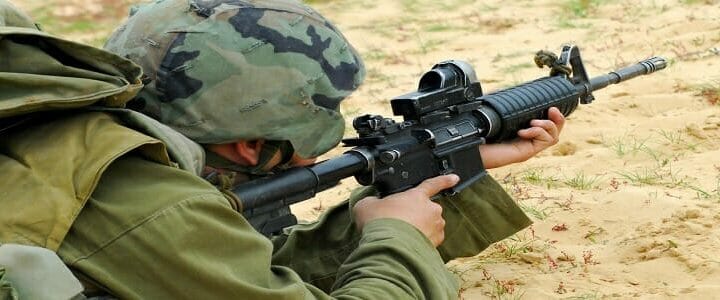Let’s be perfectly clear: what’s going on along the border between Israel and the Gaza Strip is not a protest, it’s an incursion. And it has absolutely nothing to do with the opening of the U.S. Embassy in Jerusalem.
Monday was a momentous day in many respects. The U.S. chose to open the embassy, the first foreign embassy to open in Jerusalem rather than Tel Aviv, on May 14 because it marked the 70th anniversary of the end of the British Mandate in Palestine. It also marked the foundation of the State of Israel. Since 1998, Palestinians have called the following day “Yawm an-Nakba,” or the “Day of the Catastrophe.” On this day, they commemorate, often with violence against Israel, the displacement of 700,000 Palestinians from their land.
There are two important points to take away from Monday’s fighting, in which as many as 60 people died and hundreds, if not thousands, were injured.
Protests are a literal smokescreen
The majority of the “protestors” are indeed unarmed civilians. But as Shin Bet, Israel’s internal security service, explained on Monday before the worst of the violence began, they have a very real military purpose.
The border between Gaza and Israel is fenced. This prevents easy access for Hamas terrorists, who present a very clear and demonstrated threat to Israeli civilians. After all, despite its recent efforts to tone down some of its rhetoric, Hamas is still dedicated to Israel’s destruction. In its charter, (which also calls the Rotary and Lions clubs “sabotage groups”) Hamas descrbes itself as “one of the links in the chain of the struggle against the Zionist invaders.”
The charter invokes the words of Hassan al-Banna, the Egyptian founder of the Muslim Brotherhood, of which Hamas considers itself a part. “Israel will exist and will continue to exist until Islam will obliterate it, just as it obliterated others before it.”
More than a decade ago, Hamas became another terror organization to employ the strategy the Irish Republican Army called “the ballot box and the Armalite,” mixing the use of violence and electoral politics. Despite, or perhaps because of, its status as a terror organization, Hamas won the Palestinian elections of 2006, although a feud with rival party Fatah has meant there have not been elections since then.
But the armed struggle continues despite Hamas’ electoral successes.
Shin Bet learned through questioning captured Hamas operatives that the protestors’ job is to open holes in that fence to give Hamas a pathway into Israel. That’s exactly what they did on Monday. Thousands of Palestinians, many throwing Molotov cocktails, or flying kites emblazoned with swastikas carrying bombs over the border, stormed selected spots along the fence, lighting tires to create a smokescreen to hide much of their activities. Once they’d breached the fence, Hamas moved in.
Among the dead were 10 members of the Hamas “internal security apparatus.” In case you’re wondering if the involvement of these Hamas employees was a fluke – on March 29, five other Hamas security personnel died in similar cross-border rioting.
Which brings us to Iran.
Iran’s malign influence
That’s the term of art in vogue with the Trump administration. It’s a polite term for Iran’s role as the chief state sponsor of terrorism. The ongoing Iranian campaign to destabilize the region includes its almost certain interference in Iraqi parliamentary elections, support for the Assad regime in Syria, arming the Houthi rebels in Yemen, funding the terrorist organization Hezbollah in Lebanon – and funding Hamas.
This funding isn’t exactly a secret, either. Last year, after a six-year dispute over Hamas’ refusal to back Bashar al-Assad in the Syrian civil war, Hamas and Iran kissed and made up. Suddenly solvent thanks to the easing of sanctions and the literal piles of cash the Obama administration flew to Tehran after it signed the Joint Comprehensive Plan of Action, Iran has revved-up its export of terror.
The size of the Iranian contribution isn’t clear, but last fall, the chief of the Israeli Defense Forces, Lt. Gen. Gadi Eizenkot, said it was believed to be at least $100 million annually just for the terror activities. In August 2017, after the restoration of relations, the Hamas leader in Gaza, Yehya al-Sinwar, said publicly that, “Relations with Iran are excellent and Iran is the largest supporter of the Izz el-Deen al-Qassam Brigades [Hamas’s militant wing] with money and arms.”
In December, al-Sinwar boasted that Qassem Soleimani, commander of Quds Force within Iran’s Islamic Revolutionary Guards Corps, pledged to him that “All our of capabilities and potential are at your disposal in the battle for the defense of Jerusalem.”
That’s the real result of the Iran nuclear deal. Don’t blame Trump, don’t blame Israel. The deaths in Gaza Monday were ultimately an Iranian operation.



